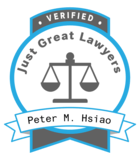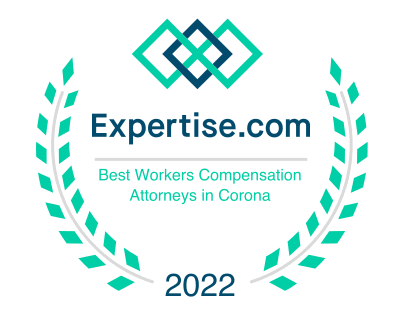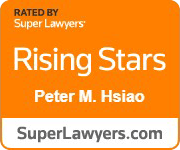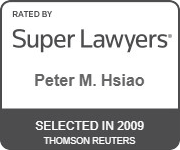American Medical Association (AMA) Guidelines: What are they & how do they impact my Work Injury?
January 4, 2024
The American Medical Association (AMA) Guidelines to the Evaluation of Permanent Impairment, commonly referred to as the “AMA Guides,” are a set of well-respected and widely recognized guidelines that are used in the assessment of permanent impairments and disabilities resulting from work-related injuries or illnesses.
These guidelines have evolved over several years and are currently in their 6th edition, yet their implications and effectiveness remain a subject of debate, primarily among Los Angeles workers comp lawyers and injured workers. This is why, today, we’re taking a deep delve into the subject.
Usage in the California Workers’ Compensation System
In the California Workers’ Compensation system, the AMA Guides are utilized to determine the extent of permanent disability and to establish settlements for injured workers. Generally, they are used in:

- Impairment Evaluation: When an injured worker in the state of California reaches maximum medical improvement (MMI), a qualified medical evaluator (QME) or primary treating physician (PTP) assesses the extent of the worker’s impairment based on the specific criteria outlined in the AMA Guidelines.
- Impairment Rating: The physician assigns a rating to the level of impairment for the injured worker by a percentage. This rating represents the degree of impairment suffered by the injured worker based on medical evidence and standardized criteria laid out in the AMA Guidelines.
- Disability Calculation: While the impairment rating is a crucial factor, it’s not the sole determinant of an injured worker’s disability in the California Workers’ Compensation System. Other factors, such as age, occupation, and loss of future earning capacity, are also considered. The Disability Evaluation Unit (DEU) within the California Division of Workers’ Compensation provides guidelines for calculating disability, which takes into account these additional factors. The DEU is a free service and costs injured workers no out-of-pocket expenses.
- Settlements: The impairment rating, along with other relevant factors, is used to calculate the monetary compensation owed to the injured worker. Settlements can be negotiated between the injured worker and the employer’s insurance carrier or determined by an administrative law judge in a workers’ compensation hearing. Typically, a settlement is reached between the applicant lawyer, representing the injured worker, and the insurance company, representing the employer. There are some instances where cases will go to trial when the insurance company is not being reasonable in the eyes of the injured workers or their lawyers.
Comparison with Older Work Restrictions:
Before the adoption of the AMA Guidelines, disability assessments in California Workers’ Compensation often relied on older methods, which had several limitations. Here’s a comparison of the two mechanisms:
AMA Guidelines:
- Objective and Standardized: The AMA Guides provide a standardized framework for evaluating impairments, making the process more objective and consistent. This has been debated but is generally agreed upon.
- Evidence-Based: The guidelines are based on medical evidence and clinical criteria, which enhances the credibility of the assessment.
- Comprehensive: The guidelines consider various body systems and provide a comprehensive approach to assessing impairments.
- Adaptability: The guidelines can be updated to reflect advances in medical knowledge and practices. Adapting the guidelines can be construed in two different ways: Injured workers may feel they’re benefiting from the change in guidelines, whereas, in certain cases, insurance companies may feel that they are not benefiting from updates.
Older Work Restrictions:
- Subjective: The assessment of disability under older methods often relied on subjective judgments, leading to inconsistencies and potential bias. Due to the nuances of each injury, and each person, many believe that the subjective approach was a much more equitable system and awarded injured workers settlements that were considered to be fairer.
- Varied Criteria: Work restrictions were often determined by individual physicians, resulting in varying criteria and lack of uniformity.
- Limited Scope: Older methods may not have considered the full range of impairments and their impact on an injured worker’s ability to work. This argument has been made, but most qualified medical examiners and primary treating physicians believe that the subjective method actually considered the full range of impairments more effectively than AMA Guidelines.
- Inflexible: These methods were less adaptable to changes in medical knowledge and practices. This inflexibility was seen as a benefit by applicant attorneys and their injured clients. AMA Guidelines are very specific and do not take into consideration any subjectivity, whereas, in the old system, many believed the subjectivity was to the advantage of the clients, based on all the different conditions in nuances of each case.
Benefits to Injured Workers
The adoption of the AMA Guidelines has generally (but not universally) been seen as more beneficial for injured workers for several reasons:
- Fairness and Consistency: The guidelines provide a more objective and consistent framework for assessing disabilities, reducing the potential for arbitrary or biased decisions. This objectivity has been argued by applicant attorneys and injured workers due to the cookie-cutter nature of the AMA Guidelines.
- Transparency: The use of standardized criteria makes it easier for injured workers and stakeholders to understand how disability ratings are determined. While this is true (to an extent), the new system is only deemed more transparent due to it being a simplified version that takes less work.
- Credibility: The Guidelines are based on medical evidence and widely accepted clinical criteria, enhancing the credibility of impairment ratings. Again, the applicant attorneys in California do not believe this is the most credible way to set impairment ratings for injured workers. The AMA Guidelines are considered by applicant attorneys and injured workers to be a more beneficial system for insurance companies and their clients.
- Adaptability: The Guidelines can be updated to reflect advances in medical knowledge, ensuring that assessments remain relevant and fair over time. However, the same adaptability can be a negative thing. The reason for this is that insurance companies have incredible lobbying power, which they have used in the past. They will most likely continue to lobby the state legislature in the future, forcing the laws to lean to their benefit, in order to make more profits and avoid giving injured workers in the state of California a fair settlement.
However, it’s essential to note that the application of the AMA Guidelines can still involve complexities and disputes, and their effectiveness in benefitting injured workers can vary depending on individual cases and the accuracy of impairment assessments.
Conclusion

The American Medical Association (AMA) Guidelines are currently used in the California Workers’ Compensation system to establish personal disability and settlements for injured workers. These guidelines are generally considered, mainly by insurance companies and employers, more beneficial than older, subjective methods for assessing disabilities, as they provide a standardized, evidence-based, and transparent approach.
However, the effectiveness of these guidelines in benefiting injured workers may vary depending on the specific circumstances of each case and the accuracy of impairment assessments. The vast majority of applicant attorneys in the state of California preferred the previous method of establishing impairment over the AMA Guidelines. While this has been a contentious issue for several years now, the State has made it very clear that they are not going back to the old rating system, and the AMA Guidelines are here to stay.
Who’s the preferred Los Angeles workers comp lawyer near me?
The legal team at LA Accident Pros comprises some of the most proficient attorneys in Los Angeles County. With decades of experience in the field, unwavering dedication to our clients, and willingness to fight for what’s just, we’re the perfect choice of partner to see your rights realized.
Additionally, we take all cases on a contingency basis, which means if we don’t win your case – you don’t have to pay us anything, ever. Reach out to us today for a free, no-obligation consultation via phone, chat platforms, or in person (by appointment only), and let us be the team that tips the balance of scales in your favor!

















